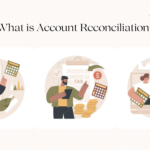
Decoding RFQs and RFPs: Key Differences for Effective Procurement
Writing a request for quote vs request for proposal that receives a response might boost your business’s chances of obtaining the items or services it needs to prosper. While they may appear to be the same, request for proposal vs request for quote serve different functions in the procurement process. In this post, we will define request for proposal vs quote, explain the differences between the two, and examine when to use a request for quote vs request for quote.
Before delving into the meat of this blog, however, here are a few lines that condense the essence of the entire blog in about seventy words: the choice between RFQ and RFP is determined by your aim and the breadth of the items or services you are acquiring. If you know exactly what items you need and are solely looking for a price comparison, RFQs are the way to go. RFPs, on the other hand, should be used when studying sophisticated services that necessitate the examination of additional factors such as expertise, reputation, and working technique.
Read more: Quote to Cash Vs Order to Cash: Unraveling the Sales Cycle for Business Growth
What is a Request for Quote (RFQ)?
An RFQ is a document that is a formally distributed document to possible suppliers in order to get price information for a certain product or service. An RFQ’s goal is to collect accurate and competitive prices from different providers. When the product or service sought is well-defined and the major decision factors are price and delivery time, RFQs are routinely employed.
A typical RFQ includes the following items:
- A thorough description of the necessary product or service.
- Specifications, numbers, and any special needs.
- A demand for detailed prices for each component or service.
- Timelines for delivery and terms.
- Any purchase-related terms and conditions.
RFQs are beneficial when the purchase decision is mostly based on price and the product or service criteria are simple. They are often utilized in the acquisition of standard items.
What is a Request for Proposal (RFP)?
A request for proposal (RFP) is a thorough document submitted to possible suppliers in order to obtain detailed offers for a certain project, solution, or service. RFPs have a greater scope than RFQs and are used when an entity seeks more information than just price. RFPs are typically utilized when an organization is looking for innovative ideas, knowledge, and specific information about how a vendor intends to meet project objectives.
An RFP normally comprises the following items:
- Detailed project or service specifications.
- Specifications, aims, and goals.
- Desired results and scope of labor.
- Technical, functional, and performance specifications.
- Budgetary restraints (if any).
- Criteria for evaluation that include considerations other than cost.
RFPs are frequently used for complicated projects such as software development, consulting services, building projects, and other solutions where the business is looking for unique and personalized solutions.
Why These Key Differences Between Request for Quote (RFQ) and Request for Proposal (RFP) Matter?
The distinctions between RFQs and RFPs are significant because they influence how businesses approach their procurement processes:
Efficiency and speed: Because of their emphasis on price and simplicity, RFQs are easier to create and assess. In contrast, RFPs need greater time for both the buyer and potential providers to submit thorough offers.
Applicability: Depending on the nature of the demand, organizations should pick between RFQs and RFPs. Using the proper approach guarantees that the procurement process is appropriate for the project or product’s complexity.
Solution Quality: RFPs enable more thorough bids that address the organization’s unique needs. This can result in higher-quality solutions that are more aligned with the aims of the company.
Cost and Value Balance: Because RFQs stress cost reductions, they are best suited for standardized goods. RFPs are designed to strike a balance between cost and value, making them ideal for projects requiring creative solutions.
When to Request for Quote (RFQ) and When to Request for Proposal (RFP)?
RFQs are typically used by businesses when they already know the specific product or service they want and are only interested in the pricing. However, when a company is not sure of what they need, they can utilize an RFP too. In doing so, they are asking for suppliers to submit proposals detailing how they plan to handle the specified challenge.
An RFP may also be issued to locate suppliers capable of performing a certain sort of work or providing a specific service or to evaluate rival project approaches and qualifications of numerous possible bidders. Following the submission of proposals, formal bids may be requested to complete the vendor selection process.
Almost all quotation and proposal inquiries are sent electronically. It makes gathering bids and reviewing prices easier, and it speeds up the approval process when it comes time to sign on the dotted line.
That said, regardless of which of the two options you end up choosing for your business, it needs to be understood that you must still set principles and standards to assist those in charge of procurement in doing their jobs as effectively as possible. For this task, RFP templates and checklists are both useful tools.
Read more: SubscriptionFlow to Generate Optimized Sales Proposals That Can Grow A Loyal Customer Base
The bottom line
Creating appropriate Request for Proposal (RFP) and Request for Quote (RFQ) documents will greatly improve your company’s procurement performance. While these phrases may appear to be more or less the same, their specific and unique purposes are extremely important. RFQs seek pricing information for specific items or services, with an emphasis on simplicity and efficiency. RFPs, on the other hand, seek detailed offers for complicated projects or solutions that emphasize value, creativity, and customization.
These distinctions help firms optimize their procurement procedures, assuring a suitable solution for each case. Whether you use an RFQ or an RFP, electronic submission and signing technologies that are part of a subscription management platform like SubscriptionFlow streamline the whole process, seamlessly speeding up vendor selection and contract approval. Book a demo with SubscriptionFlow to learn more about how you can use this platform to place a request for a quote or a proposal, depending on your business.










